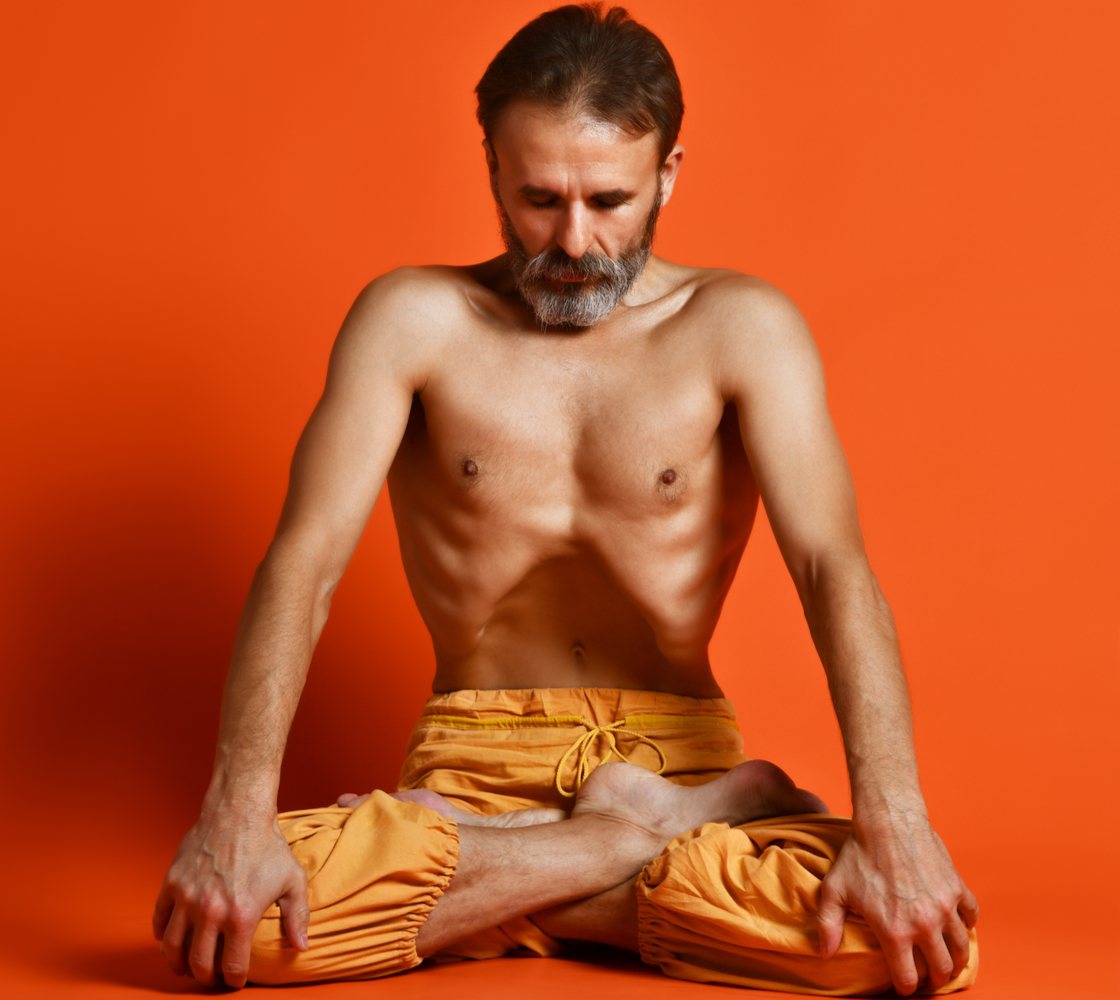
The word Bahya comes from Sanskrit, meaning “outside” or “external.” Pranayama refers to the practice of yogic breathing techniques.
In Bahya Pranayama, you take a deep breath in and then exhale completely to empty your lungs. After exhaling, you hold your breath out for a few seconds and apply specific bandhas (body locks). This act of retaining the breath after exhalation is what makes this pranayama unique.
In yoga, breath retention is called Kumbhaka. Since this technique involves holding the breath outside, it is also known as Bahir Kumbhaka or Bahir Pranayam (Bahir means “outside”).
During the practice, three bandhas are used to enhance lung function and stimulate different internal organs. Regular practice of Bahya Pranayama helps activate the abdominal organs, improving digestion and elimination. It strengthens the respiratory system and brings a sense of balance between body and mind. This pranayama is also believed to help manage thyroid imbalance and reduce symptoms of diabetes.
How to do bahya pranayama(step by step)
It’s best to practise Bahya Pranayama on an empty stomach. If you also do Kapalbhati Pranayama, practise Bahya Pranayama right after it. Beginners can start with 5–7 minutes of practice and gradually increase the breath retention time as they progress.
- Sit in a cross-legged posture, preferred Sukhasana or Padmasana.
- Take a deep inhalation and then exhale, completely emptying your lungs.
- Hold your breath out and bring your attention to perform 3 Bandhas;
- Contract your anus muscles and pull it upwards – Mula Bandha (Root Lock)
- Lift your abdominal muscles and contract them inwards – Uddiyana Bandha.
- Bring your chin down to the chest – Jalandhar bandha (throat lock).
- If you have a stiff neck or any other issue, you do not have to pull down your chin. Keep your head straight and look forward.
- Hold your breath for 3-5 seconds along with these 3 body locks (together called Maha Bandha).
- Release these locks by breathing in deeply.
- Breath normally for a few seconds and repeat the process.
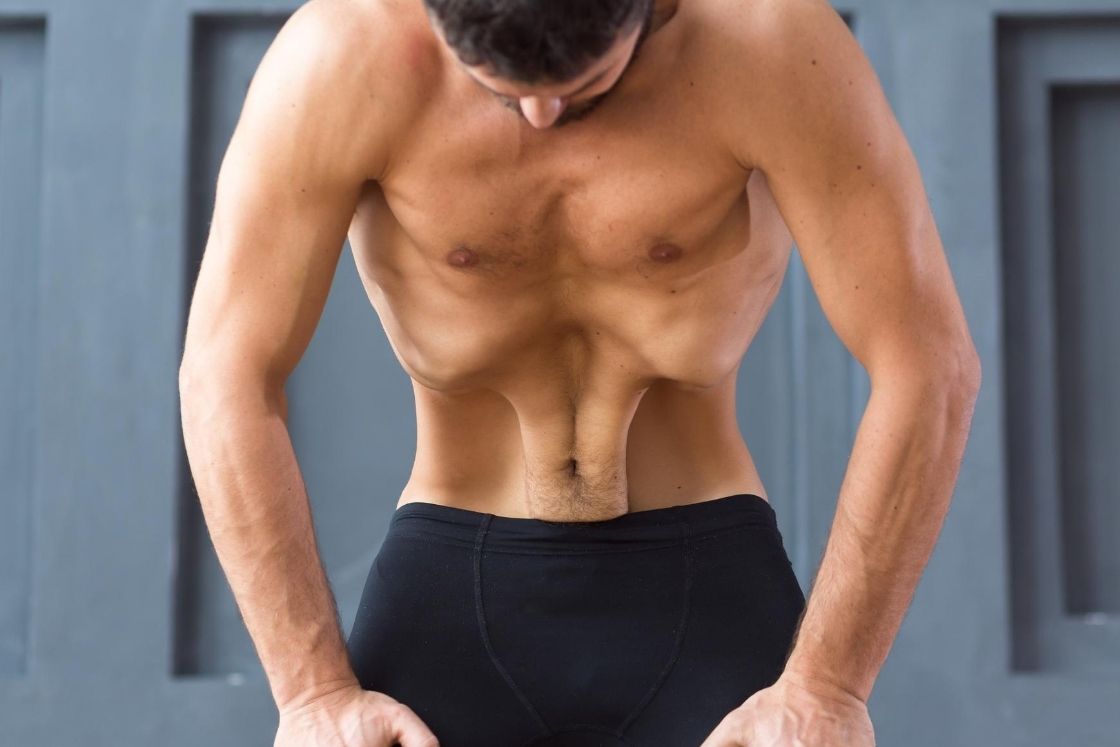
Advanced practitioners can incorporate the practice of Agnisar kriya along with Bahya Pranayama. For this, at the end of the 4th step, loosen up your abdominal muscles and churn them around the central abs. It’s considered very effective in stimulating the digestive fire.
Breathing ratio
The ideal ratio of breathing in Bahya pranayama is 1:2:3 i.e. if inhale is of 1 second, then exhalation should be for 2 seconds and finally, the breath should be held out for 3 seconds. Similarly, if inhale is doubled or tripled, then exhalation and breathe retention will be doubled or tripled also.
Bahya pranayama benefits
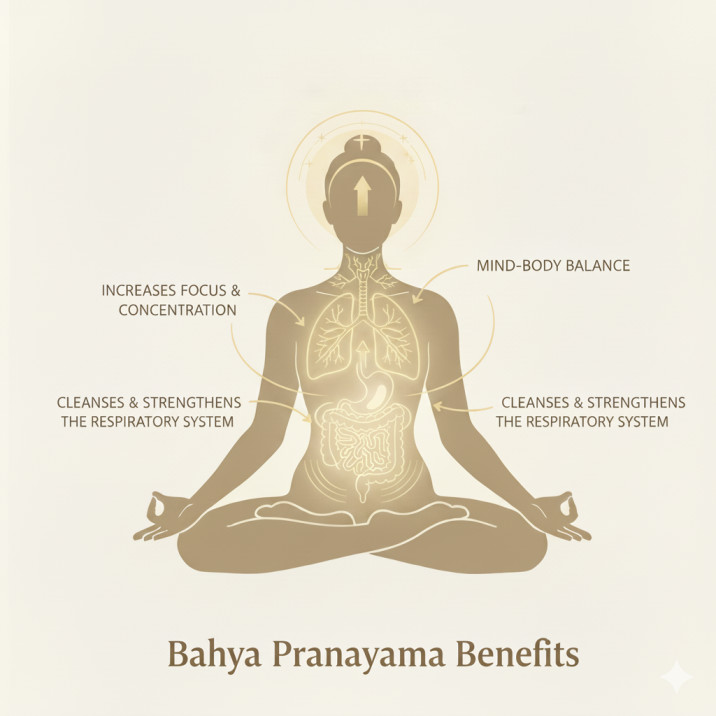
Bahya Pranayama is a yogic breathing technique that involves holding the breath after exhalation (external retention). It helps improve digestion, strengthens abdominal organs, cleanses the lungs, and calms the mind. Regular practice of Bahya Pranayama also supports diabetes management, improves focus, and balances the mind and body.
1. Improves digestion and strengthens abdominal organs
In Bahya Pranayama, you hold your breath out and draw the abdomen inward. This movement gently massages the stomach and intestines, improving their flexibility and function. It supports healthy digestion and helps reduce problems like acidity, gas, and constipation.
2. Prevents issues related to abdominal organs
This pranayama increases blood flow to vital organs such as the stomach, liver, spleen, kidneys, and uterus. It keeps these organs active and healthy, improving their natural functions and helping to prevent issues like hernia or urinary infections.
3. Cleanses and strengthens the respiratory system
Bahya Pranayama fully empties the lungs, clearing stale air and toxins. This improves lung capacity and efficiency. Studies have shown that pranayama practices can enhance respiratory health and support cardiovascular function.
4. Manage diabetes
The contraction of abdominal muscles during this practice stimulates the pancreas, promoting better insulin secretion. Consistent practice may help balance blood sugar levels and reduce symptoms of diabetes.
5. Supports kundalini awakening
Bahya Pranayama activates energy channels in the body and prepares the mind for meditation. It helps awaken Kundalini energy, bringing a deeper sense of awareness, peace, and inner stability.
6. Increases focus and concentration
Applying the three bandhas calms the nervous system and improves blood flow to the brain. This leads to better concentration, sharper memory, and mental clarity. The practice cultivates a calm and focused state of mind.
7. Promotes mind-body balance
When breath retention and bandhas are combined, the body and mind become fully synchronised. The temporary stillness created during this process helps you experience deep balance and harmony between your physical and mental states.
Anatomical Effects
Bahya Pranayama mainly works on the abdominal region. When the air is completely exhaled and the abdomen is drawn in, a vacuum is created in the stomach. This vacuum draws blood toward the digestive organs, improving their function and supporting the body’s natural cleansing process.
It also benefits the reproductive organs and aids in detoxification. The act of holding the breath out purifies the internal system and boosts overall energy and vitality.
Precautions
- Practise Bahya Pranayama on an empty stomach, at least 3–4 hours after eating.
- Avoid holding your breath longer than feels comfortable.
- Do not practise if you have high blood pressure, heart disease, or lung problems.
- Avoid during pregnancy, menstruation, or any abdominal discomfort.
- Keep your face, neck, and shoulders relaxed—avoid unnecessary strain.
- Practise in a quiet, well-ventilated space.
- Take a few normal breaths after each round before starting again.
- Learn the correct technique from a qualified yoga teacher before practising alone.
Bahya pranayama and kumbhaka
In Hatha Yoga, the term Kumbhaka means breath retention – the practice of holding the breath either after inhalation or exhalation. It is one of the key parts of Pranayama and is mentioned among the eight classical pranayamas described in traditional Hatha Yoga texts.
Bahya Pranayama is a part of one of the three main types of Kumbhaka:
- Antara Kumbhaka
- Bahya Kumbhaka
- Kevala Kumbhaka
1. Antara Kumbhaka (Internal Retention)
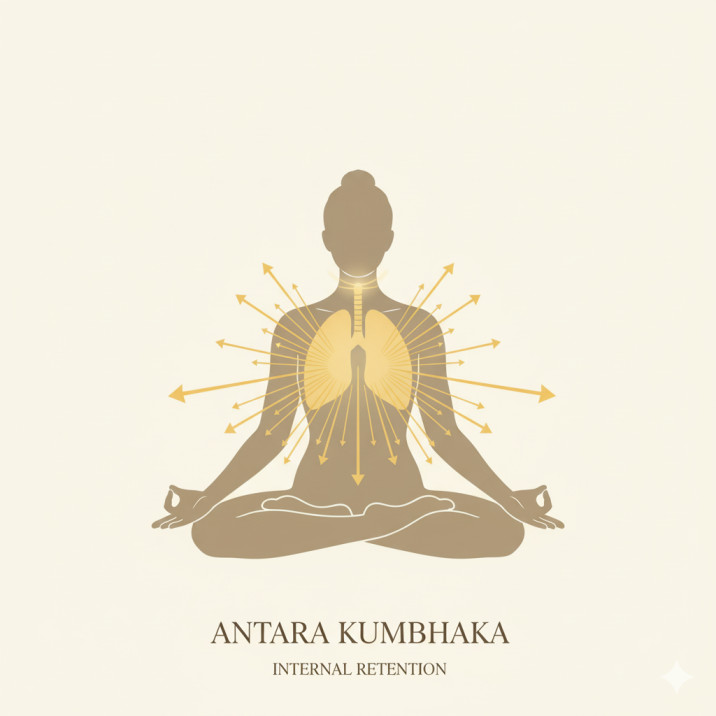
Antara means “inside.” In this practice, the breath is held after inhalation. You take a deep breath in, expand the chest, and hold the air inside by applying Jalandhar Bandha (throat lock).
A common example of this type of breath retention is Murcha Pranayama.
2. Bahya Kumbhaka (External Retention)
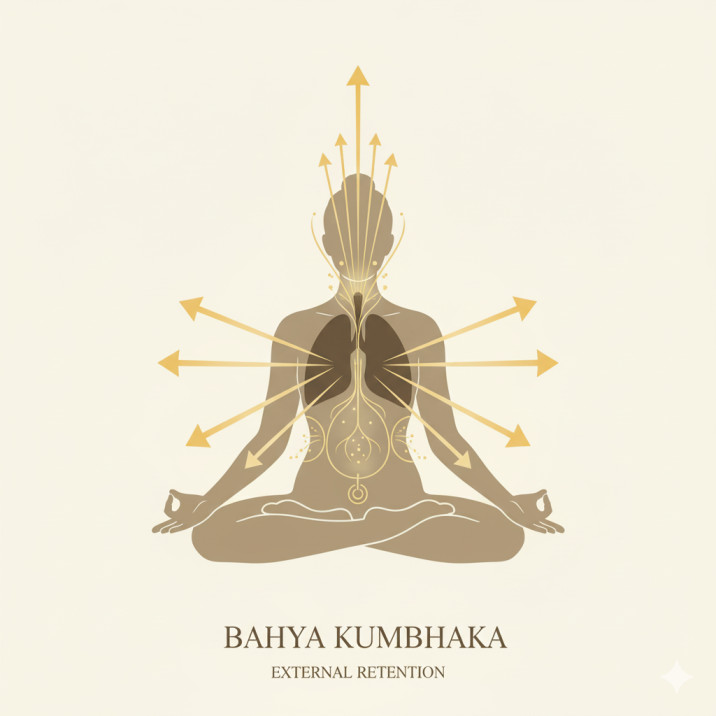
Bahya means “outside.” This type of Kumbhaka involves holding the breath after exhalation – just like in Bahya Pranayama. After exhaling completely, you apply the three bandhas ; Mula Bandha, Uddiyana Bandha, and Jalandhar Bandha. This creates a feeling of emptiness and stillness in the body, allowing pranic energy to move upward.
3. Kevala Kumbhaka (Spontaneous Retention)
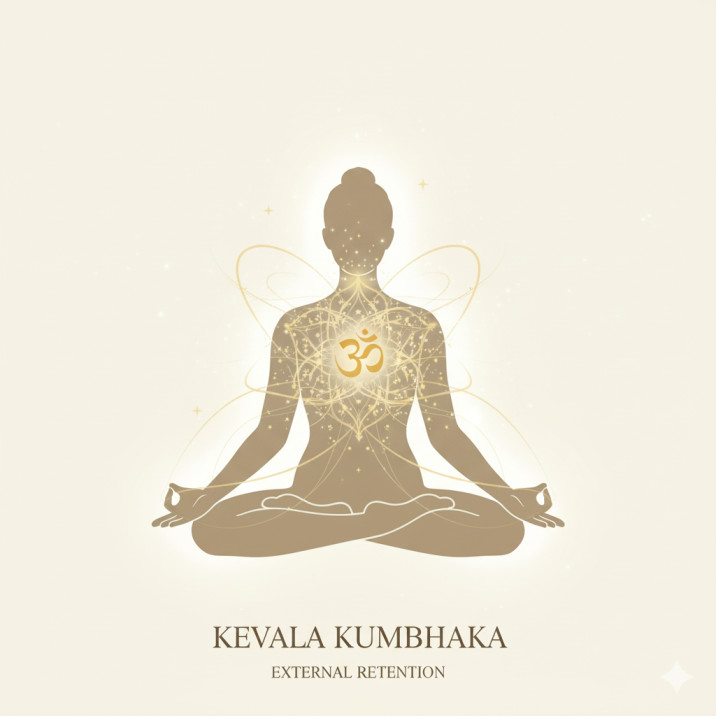
Kevala Kumbhaka is a subtle and advanced form of breath control. It happens naturally during deep meditation when breathing becomes effortless – neither inhaling nor exhaling. To reach this stage, one must first master both Antara and Bahya Kumbhaka.
Kevala Kumbhaka helps quiet the mind and leads to a deep state of inner stillness. For this reason, it is often called natural pranayama or spontaneous breath retention.
Frequently Asked Questions
If you are a patient of high blood pressure or are suffering from heart disease and cervical colitis, you should refrain from performing bahya pranayama. Moreover, practitioners who have a history of asthma and migraine should also avoid this.
Women during pregnancy and menstrual cycle should also refrain from doing this pranayama as it creates pressure around the uterus and abdominal region.
Bahya Pranayam should be practised on an empty stomach. If you have eaten a meal, make sure you keep a 3-hour gap before you practice this pranayama. Also, empty your bowels if you are practising the bahya pranayama early in the morning.
Although there are no known side effects of bahya pranayama, however, it is better to prepare your lungs before performing this pranayama. You can practice rapid external breathing like Kapalbhati Pranayama or Bhastrika Pranayama to prepare your lungs.
There are 3 bandhas that are engaged during bahya pranayama, which are :
Muladhara Bandha or Root Lock – located in the pelvic floor muscles
Uddiyana Bandha – located from the abdominals up to the diaphragm
Jalandhara Bandha – located in the throat.
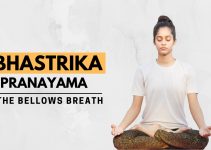
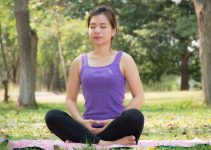



When taking a deep breath, should that be through the mouth or nostrils?
Thanks
Nostrils breathing only.
can with prostrate enlarge and hernia diabetic patients do this?
Bahya pranayama requires great expertise in holding breath for an extended period, therefore it doesn’t recommend for a person with prostate enlargement and hernia, As holding breath may put plevic muscles under pressure.